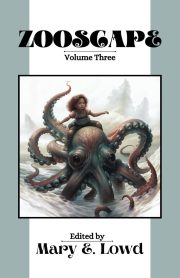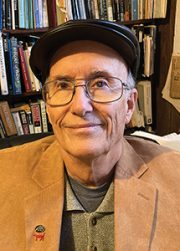How the Real-Life STEM Astrophysicist Keeps the Star Trek Universe Real–and Really Awesome
By Randee Dawn
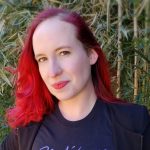
Dr. Erin Macdonald
Whatever you think a science advisor for Star Trek TV shows should look like, Dr. Erin Macdonald isn’t that. She’s actually far geekier and far cooler than you might expect. At 36, the Colorado native with a PhD in astrophysics is the first woman to serve as a science advisor for the franchise, having signed on in 2019. She also wears tons of tattoos, from science fiction spaceships to the classic Vulcan phrase “live long and prosper” to one from Alan Rickman: “It’s a human need to be told stories.” Macdonald should know: She spoke with SFWA Blog’s Randee Dawn about being a one-woman STEM career panel, an expert on things like dilithium crystals, and why keeping things real in shows like Trek can give humanity hope for the future.
SFWA Blog: What came first for you: a love of science fiction or the love of science fact?
Dr. Erin Macdonald: I think everyone is innately born a scientist. But the idea of becoming a scientist as a job hadn’t occurred to me until I watched The X-Files and saw Dana Scully. I was obsessed with her and wanted to be her. That was the first time I realized that being a scientist could be a job.
SFWA Blog: How did you end up getting a PhD in astrophysics by the time you were 25?
Dr. Macdonald: The American graduate school system was longer than I was interested in committing to. My family is from Scotland, and there the doctorate programs are more like apprenticeships. You show up, and they’re like, “Here’s your desk; we’ll see you in four years for your thesis.” I graduated [college] the first week of May, and by June 1, I was living in Scotland. I finished three-and-a-half years later. I didn’t give myself any time off.
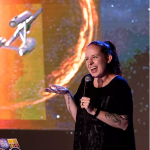 SFWA Blog: You didn’t want to be a professor, but you really liked teaching, right?
SFWA Blog: You didn’t want to be a professor, but you really liked teaching, right?
Dr. Macdonald: I loved teaching introductory courses, which are usually considered the short straws in academia. I used science fiction as an anchor point to give students analogies, to make it more accessible to them – because I’m a science fiction fan as well. I started going to science fiction conventions where I could be on panels to use science fiction to teach science to audiences. That’s what took me on this weird journey.
SFWA Blog: Which conventions helped launch you?
Dr. Macdonald: I started with Dragon Con. They have a whole track dedicated to science and a track dedicated to space – so that was the entry point for me. I moved to LA while still working as an aerospace engineer. I started meeting people, and it was through those connections that Star Trek heard of my talks and invited me to speak at their licensed events. When Michelle Paradise came in [as a co-executive producer] for Star Trek: Discovery, she wanted to hire a scientist who could help.
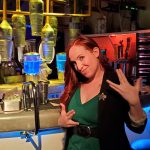 SFWA Blog: There’s a longstanding tradition of Trek making efforts to be scientifically accurate, I believe.
SFWA Blog: There’s a longstanding tradition of Trek making efforts to be scientifically accurate, I believe.
Dr. Macdonald: Back in the 1960s, [franchise creator] Gene Roddenberry would call his friends at Raytheon to ask questions, but there wasn’t a formal role for that. For Next Generation and Deep Space 9, they did have science advisors – but I was the first one brought in for this new generation of Star Trek shows.
SFWA Blog: And you were a Trek fan of long-standing, right?
Dr. Macdonald: I watched a lot of Voyager in grad school. Captain Janeway became my mentor. I didn’t have any [real life] mentors; I didn’t see any women doing what I was doing in my career field. But I’d see Janeway and how she operated, and I thought I couldn’t let her down. I dedicated my PhD thesis to her, so that really came full circle.
SFWA Blog: What does it mean to be a show’s science advisor? Are you on set all the time?
Dr. Macdonald: The main part of my job is to make sure we don’t say anything wrong, that the dialogue doesn’t contradict any of the known science. I’m also the keeper of Star Trek tech across the franchises. The way we talk about replicators and dilithium and transporters – we want to make sure that stays consistent. So both real and fake science. I read scripts as the production office gets them, and I make notes and send them back. I also work in post-production to help them with graphics or on-screen symbols, whether it’s a nebula or an equation.
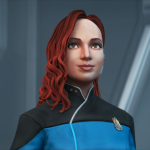 SFWA Blog: On the one hand, space travel captures the imagination like nothing else. On the other hand, there’s so much that’s impossible about doing it on the scale Trek has. How do you avoid not being discouraged by facts?
SFWA Blog: On the one hand, space travel captures the imagination like nothing else. On the other hand, there’s so much that’s impossible about doing it on the scale Trek has. How do you avoid not being discouraged by facts?
Dr. Macdonald: What’s so great is humanity still has this desire to go into space, even though we’ve realized space is big and hard to travel and difficult. We’re still trying to find new and innovative ways to get humanity out into the stars. Things like warp drive that break the laws of physics are, technically, possible. We just don’t know how to do it. Maybe we could one day, and some of that hope is driven by the fact that we could perhaps hop on a starship and explore the stars. Star Trek being anchored in reality and humanity’s past gives a lot of people hope.
SFWA Blog: Science has long had men as pop culture experts – Bill Nye, Neil DeGrasse Tyson – but few, if any, women. Is it part of your goal to change that?
Dr. Macdonald: I would love to. I get thrown into the pool for opportunities for outreach events and, a lot of times, networks will see my audition and say, “She doesn’t look like a scientist.” There’s still this distrust that a woman can look like a scientist. We’re not there yet. Star Trek continues this legacy of saying yes, women can be scientists and captains, and they can explain things to you. There’s still a long way to go – but we keep trying.
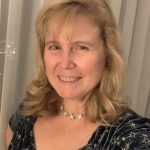 Randee Dawn is a Brooklyn-based entertainment journalist whose humorous pop culture fantasy debut novel, Tune in Tomorrow, published in 2022 (Solaris/Rebellion). She also writes regularly about show business for Variety, The Los Angeles Times, Emmy Magazine and Today.com, and is the co-author of The Law & Order: SVU Unofficial Companion.
Randee Dawn is a Brooklyn-based entertainment journalist whose humorous pop culture fantasy debut novel, Tune in Tomorrow, published in 2022 (Solaris/Rebellion). She also writes regularly about show business for Variety, The Los Angeles Times, Emmy Magazine and Today.com, and is the co-author of The Law & Order: SVU Unofficial Companion.

